Dozens of bikes are reviewed by the BikeRadar and MBUK tech teams in a given year.
From budget-friendly entry-level models to superbikes costing the same as a house deposit, we get a chance to test them all.
While time on the trail is the only way to know truly if a bike is any good, there are a number of spec mistakes that all too many brands continue to make.
Some spec options will offer – at best – questionable performance advantages while harming ride quality in other areas.
Some will opt for attention-grabbing parts that look appealing in a catalogue, but will leave you short-changed where it matters.
These are four of the most common spec missteps that make our expert testers roll their eyes each and every time.
Rob Weaver: 35mm handlebars, the standard we never really needed
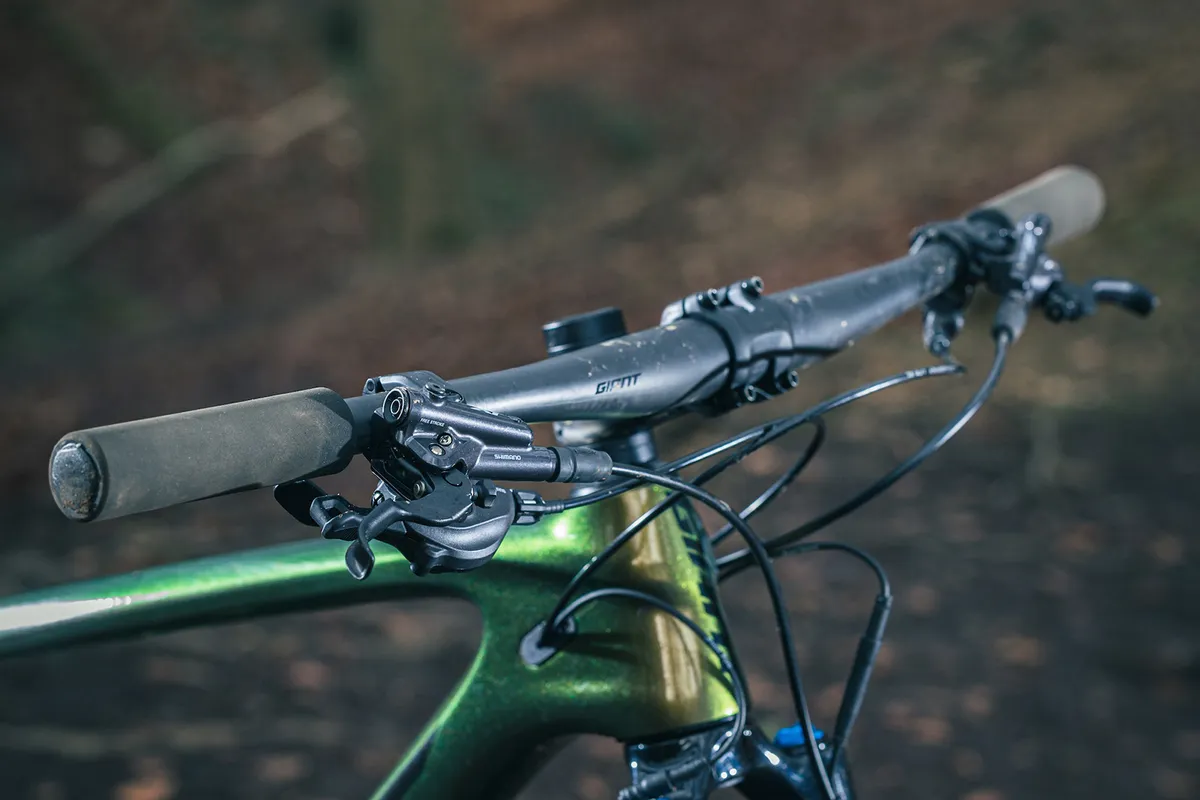
The shift to 35mm mountain bike handlebars happened a number of years ago (though not by every brand, it should be noted), yet still baffles me to this day.
While 35mm bars (up from 31.8mm) come with some claimed benefits, they’re not necessarily ones I was ever desperate for.
To start, while both alloy and carbon 35mm bars offer a slight weight saving compared to their skinnier brethren, we’re talking just tens of grams here – not exactly life-changing.
And of all the places you would look to save weight, is the handlebar the place you would start? I expect not.
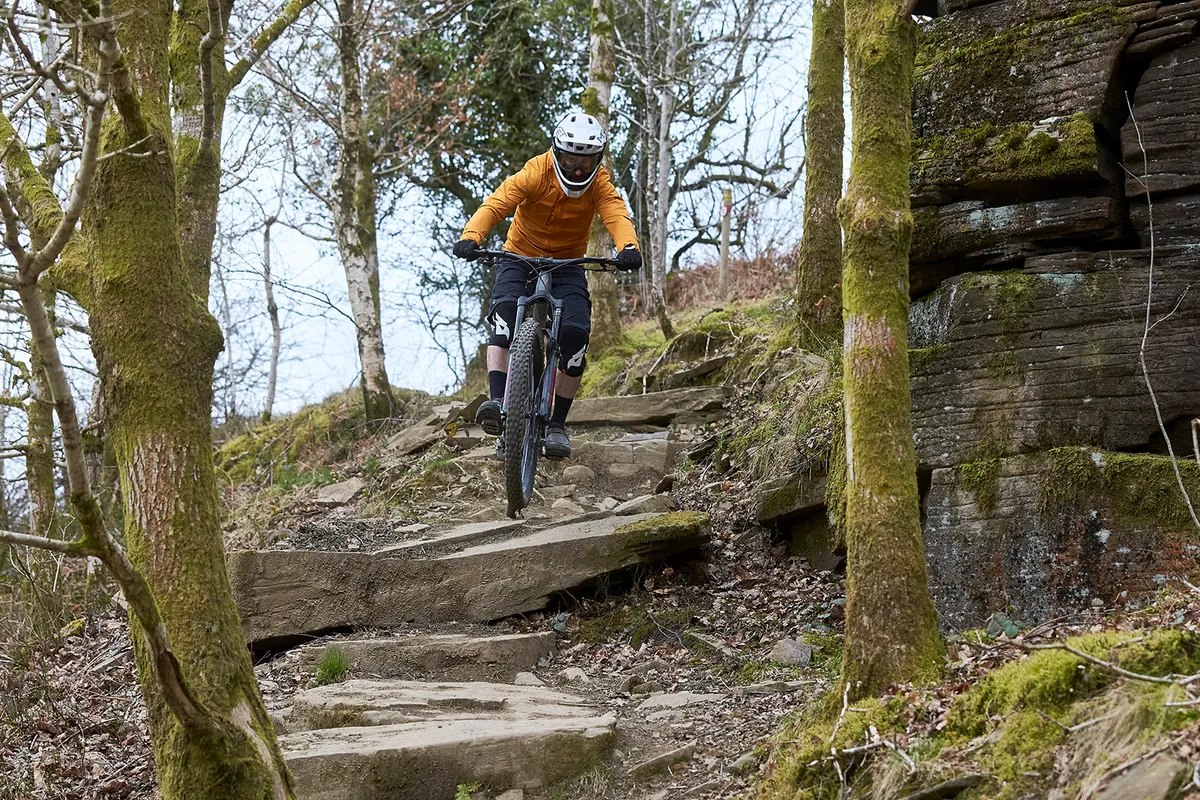
Additionally, 35mm bars tend to feel stiffer than a 31.8mm bar of equivalent width.
This is great if you value pinpoint accurate steering and precise handling, but the added stiffness also makes for a less comfortable bar.
So while things might feel reactive, precise and laser-focused at first, your hands and arms will be suffering soon enough. You can then wave goodbye to those accuracy gains on rougher trails over a couple of minutes long.
While I have ridden some great 35mm bars (OneUp Components’ carbon bar does a brilliant job of muting vibrations), I really don’t believe they offer any significant improvement over 31.8mm bars.
Luke Marshall: Why do brands still spec rubbish brakes?
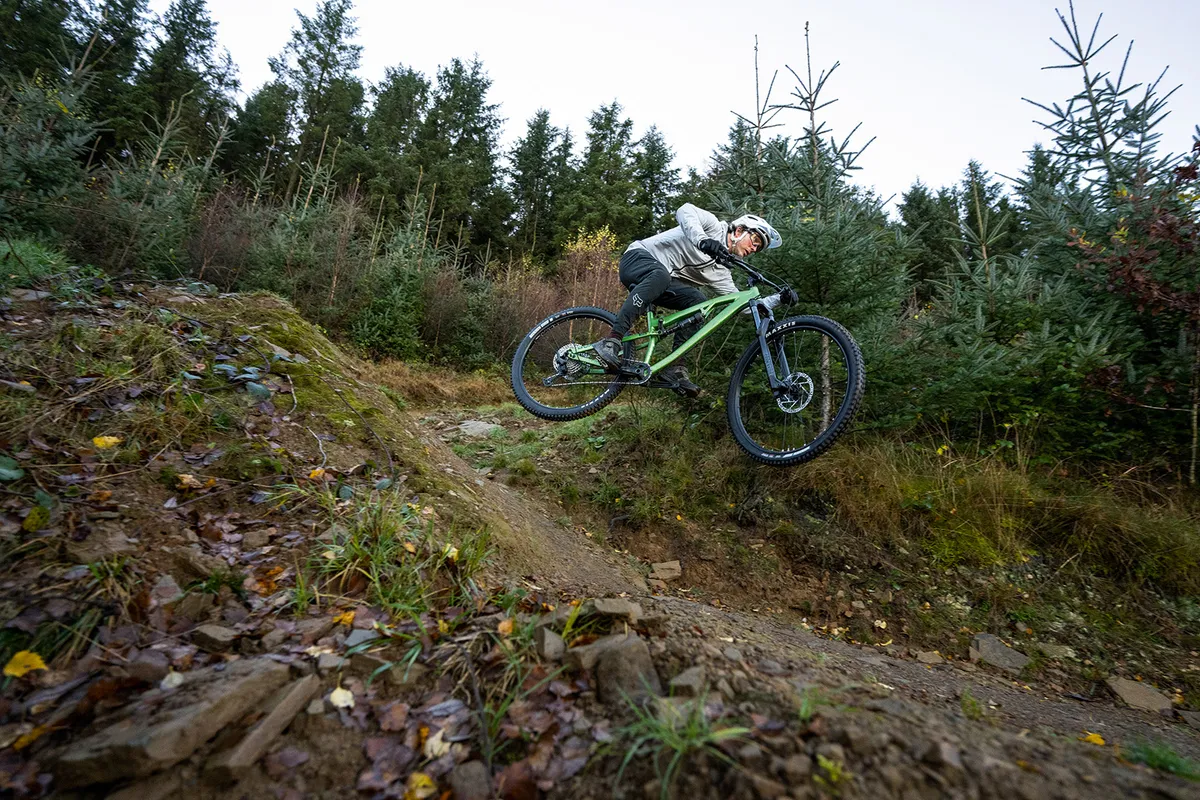
Mountain bike brake technology is so good these days, so why do brands still skimp on stopper spec?
Speccing shiny gold stanchions or a fancy rear derailleur may be attention-grabbing in a catalogue but, too often, these come at the expense of decent brakes.
To be blunt, cutting corners to save money on the thing controlling your speed is a bad idea.
In particular, speccing underpowered brakes is a recipe for disaster. It harms confidence, hinders learning and, at worst, is downright dangerous.
Can brakes be too powerful? Probably. But I bet that’s not as frightening to a novice as brakes with lacklustre or unpredictable performance.
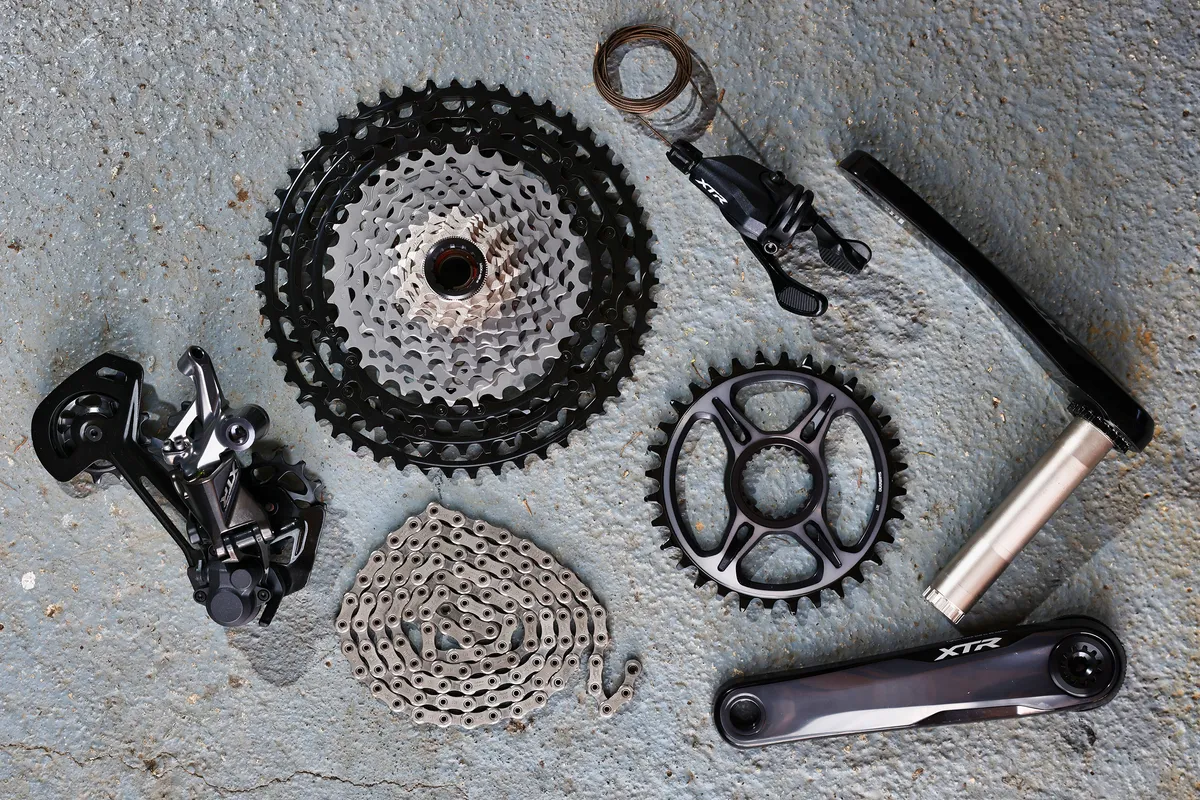
A Shimano XTR drivetrain doesn't give me anything more than Shimano Deore in tricky situations, but top-spec brakes give a hell of a lot more confidence than budget brakes.
I’m not picking on Shimano here – it makes some perfectly powerful cheap brakes.
However, if I have to choose between a mid-priced drivetrain and cheap brakes, or mid-priced brakes and cheap drivetrain parts, I know which way I’m headed.
The industry has, for years, pushed innovations in drivetrain tech as the key to an improved riding experience. With this comes an inflated focus on speccing high-tier drivetrain components.
Perhaps as consumers, we need to start lusting after bikes in the shops with the best mountain bike brakes? They will do far more for your riding than any fancy rear derailleur.
Alex Evans: Just say no to lightweight tyres on hard-hitting bikes
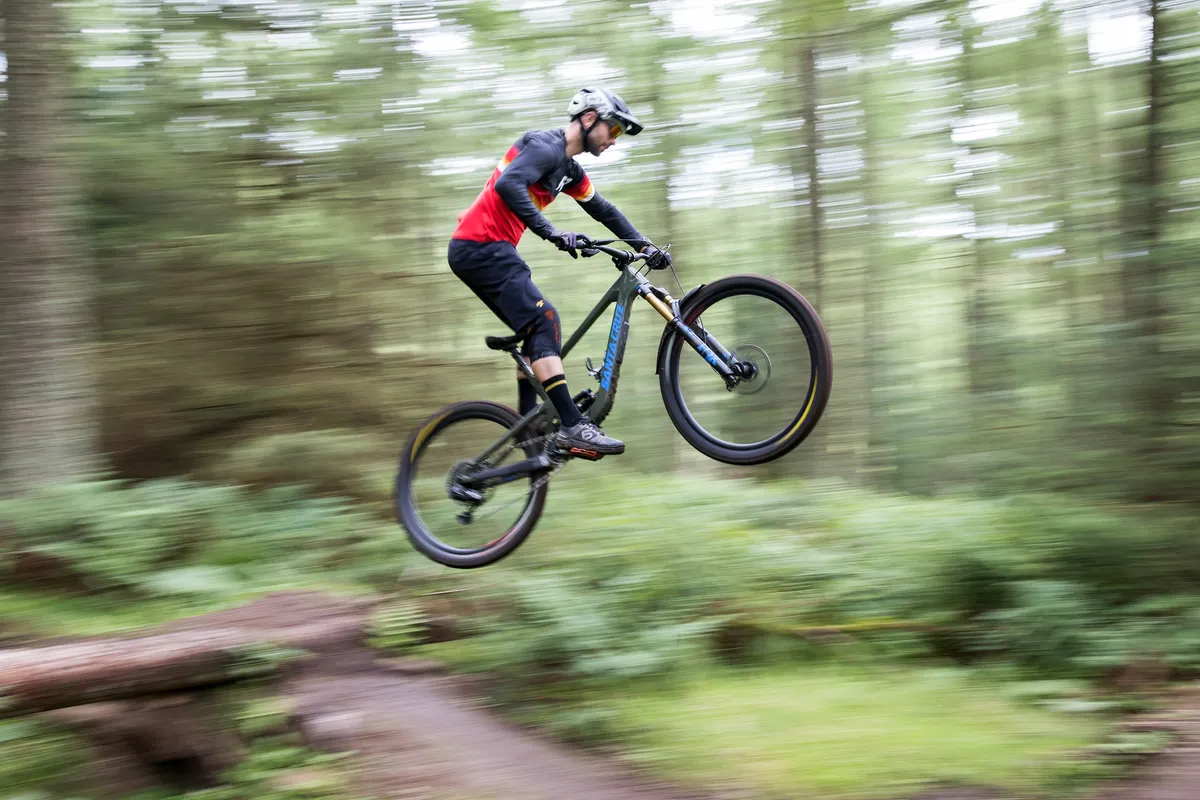
Hammering down your favourite trail in the best conditions is an elating feeling – the freedom of the outdoors combined with the precision of riding technical trails delivers a unity of experiences only bikes are capable of creating.
And when the odds are stacked in your favour, it seems like nothing can topple your state of euphoria.
However, for me, a puncture transforms any ride into a flat, depressing affair – especially when that tyre really shouldn’t have gone pop at all.
Some punctures are unavoidable, but so many are caused by brands speccing tyres that are unsuitable for a bike’s intended purpose.
Many brands still fit lightweight tyres to hard-hitting trail and enduro bikes or electric mountain bikes to reduce headline weight figures, and it needs to stop.
Whenever I have tested either type of bike with lightweight tyres, I have invariably slashed, punctured or – at the more extreme end – ripped the tyre off the rim in short order.
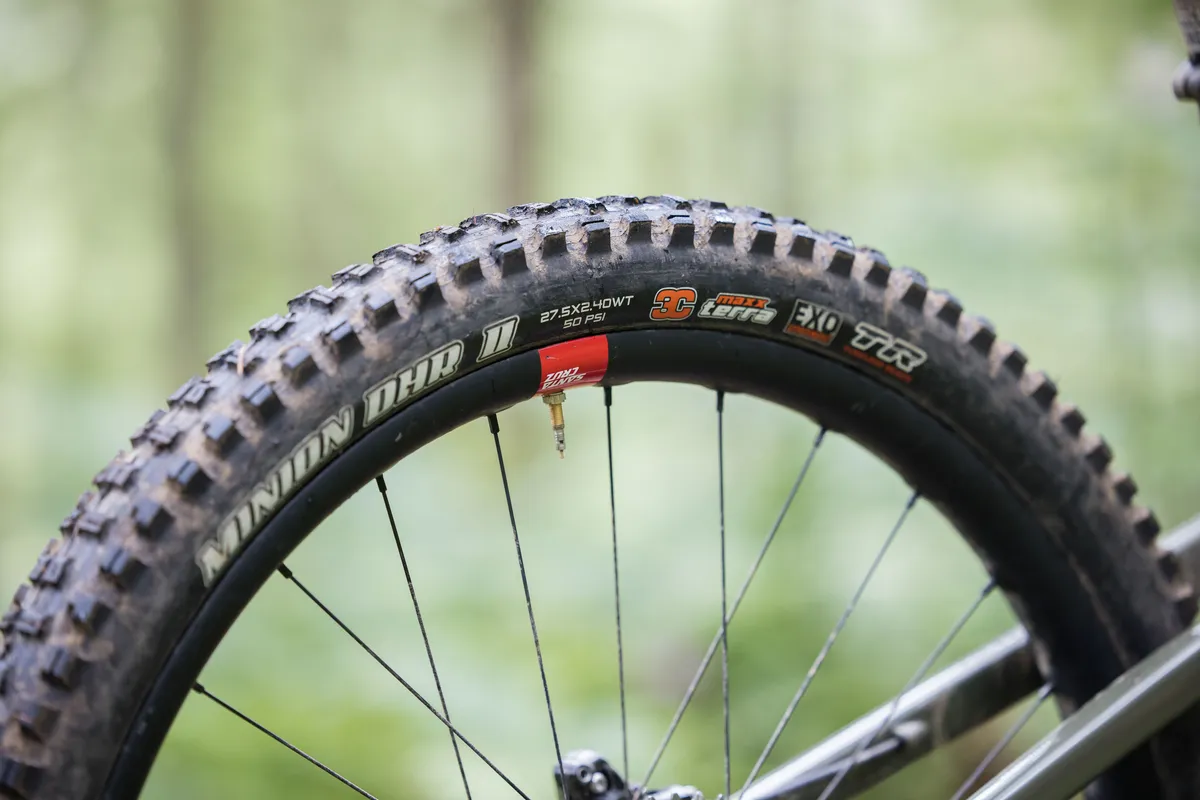
EXO, SnakeSkin or equivalently feeble casings are not acceptable on a bike designed for hard and fast riding.
Brands need to accept that, if they market a bike as hardcore, appropriately chunky rubber is going to increase the catalogue weight number.
Speccing tougher tyres comes with other benefits beyond reducing punctures.
Tougher tyres enable you to run lower pressures, improving grip, control and speed.
These benefits far outweigh any negatives the increase in weight brings, even for those lighter or slower riders.
While lightweight tyres have a place on cross-country race bikes – and, to a lesser extent, downcounty bikes – once you start venturing into trail bike territory, swapping out skinny tyres for chunkier, more protective models is a clear win.
It’s time for brands to spec the right tyres for their bikes’ intended uses so the consumer doesn’t have to shell out extra money for rubber that should be right from the get-go.
Tom Marvin: 800mm bars on (almost) everything, please
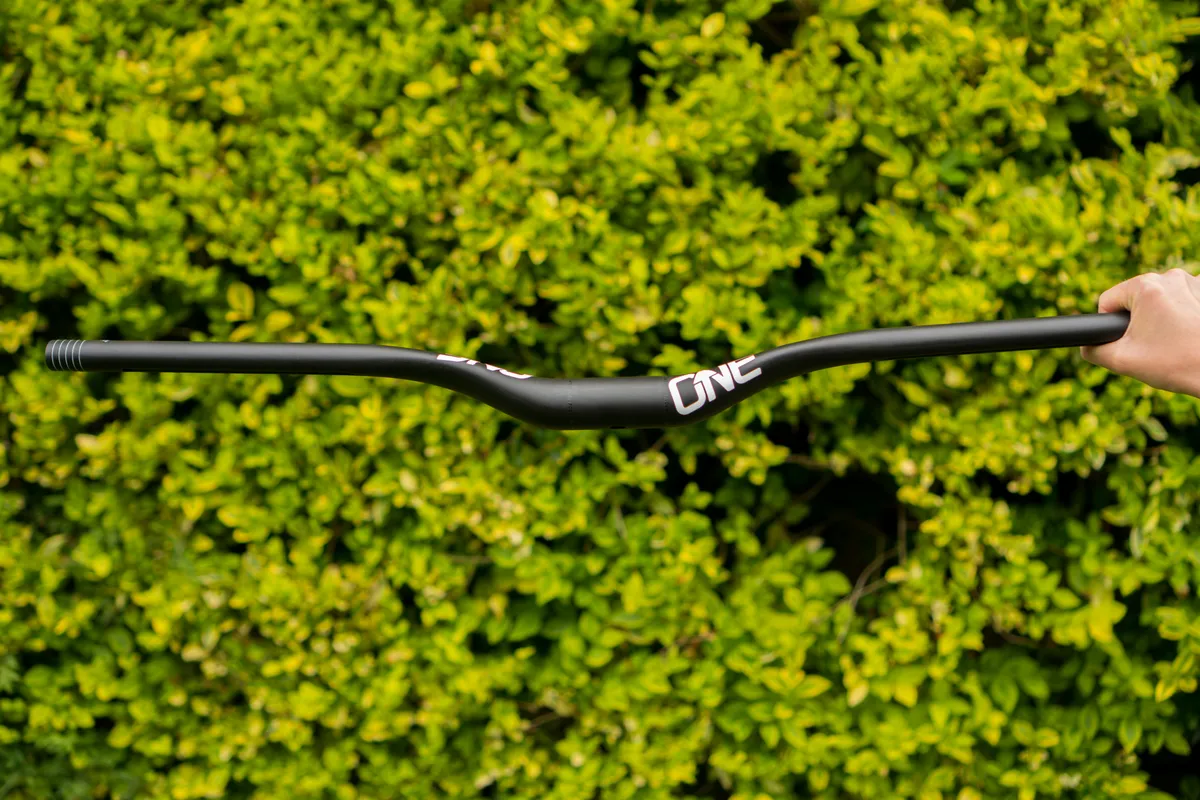
Cockpit setup is critical to comfortable and confident riding on the trail. It is the point at which two of the most sensitive parts of your body (your hands – no sniggering at the back) contact the bike.
And yet, I find more and more bikes simply don’t provide the opportunity to get fit and feel just right.
While Rob thinks 35mm bars are the big issue, I’ve got beef with narrow bars.
Personally, I like an 800mm bar. I’ve got moderately broad shoulders and have become accustomed to the wider fit of a full-width bar.
As such, I get frustrated when brands fit 780, 760 or even 740mm bars to bikes.
If 800mm sounds too wide for you, remember it’s very easy for those who prefer a narrower bar (Luke and Rob, for example) to cut theirs down.
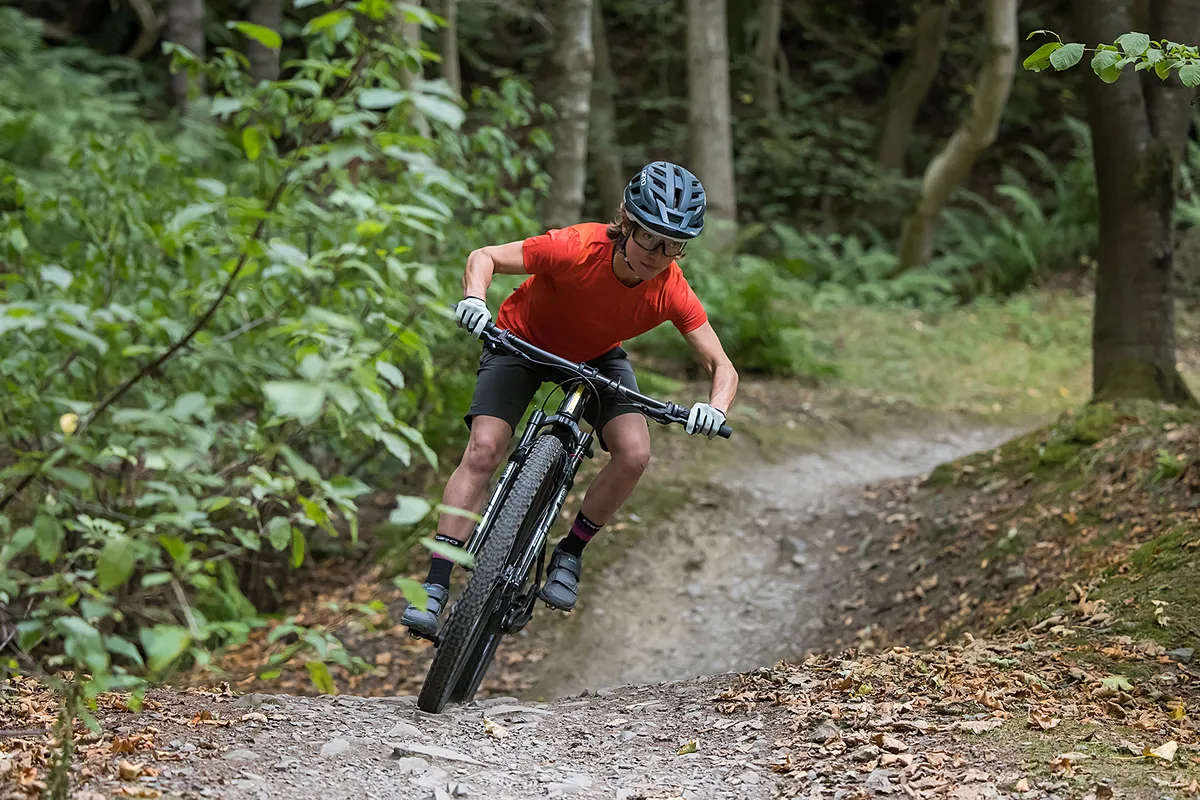
On the other hand, save for a couple of niche bar-extender options, it's impossible for me to extend my bars to suit – I’m left with my hands too close together, or I have to replace the bars altogether.
Narrow bars do, of course, have a place on smaller bikes – I’ve seen svelte riders on size XS and S bikes riding as if they were built like the Hulk.
Narrow bars also suit (some) XC bikes – you don’t require as much leverage on a go-fast bike and narrower bars are a smidge lighter.
Lopping 30mm off each end of the bars might impact ride feel and can interfere with mounting controls.
However, when it comes to bikes designed to get down a hill as fast and comfortably as possible, while also fitting the widest range of riders, I see no reason not to spec 800mm handlebars on each and every mountain bike out there.




